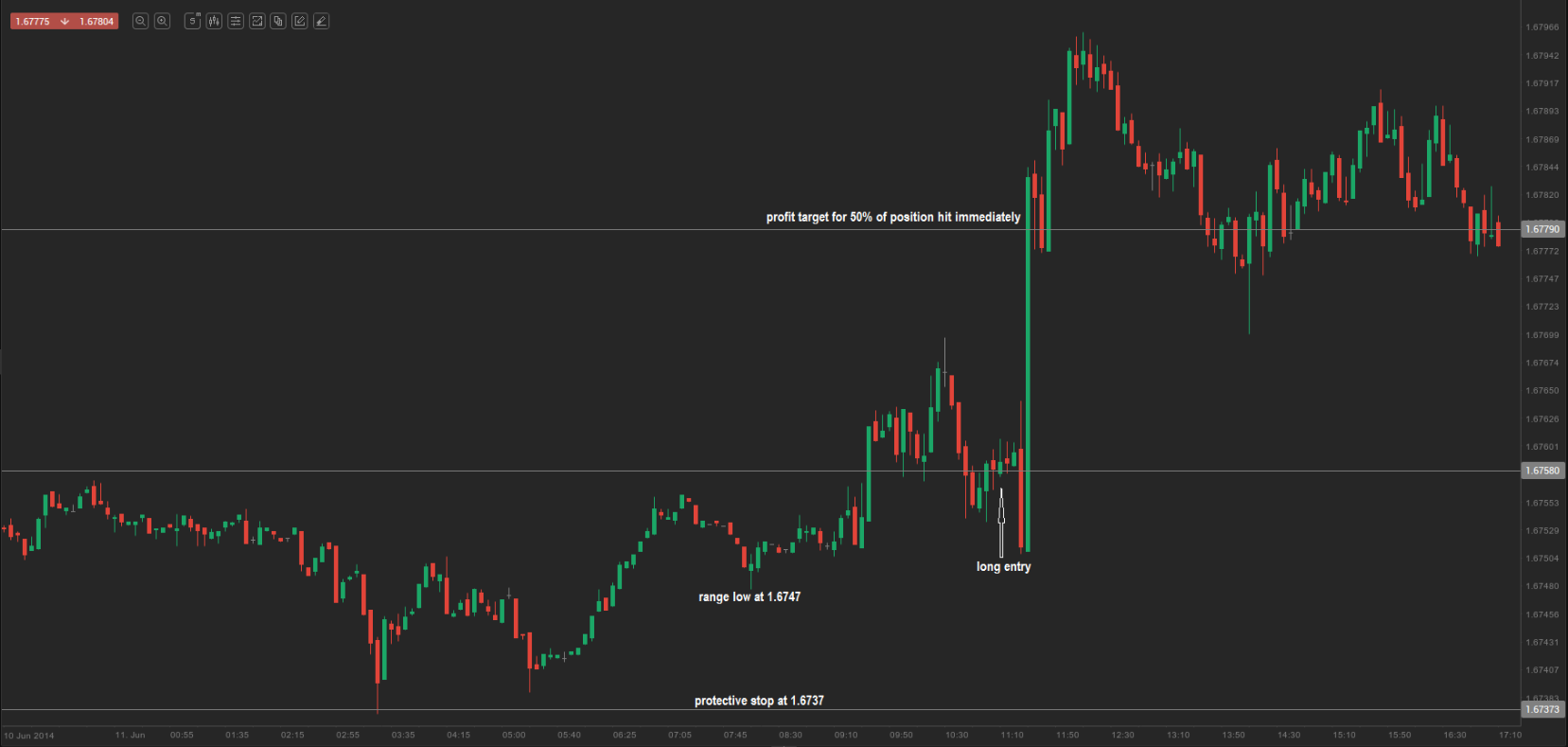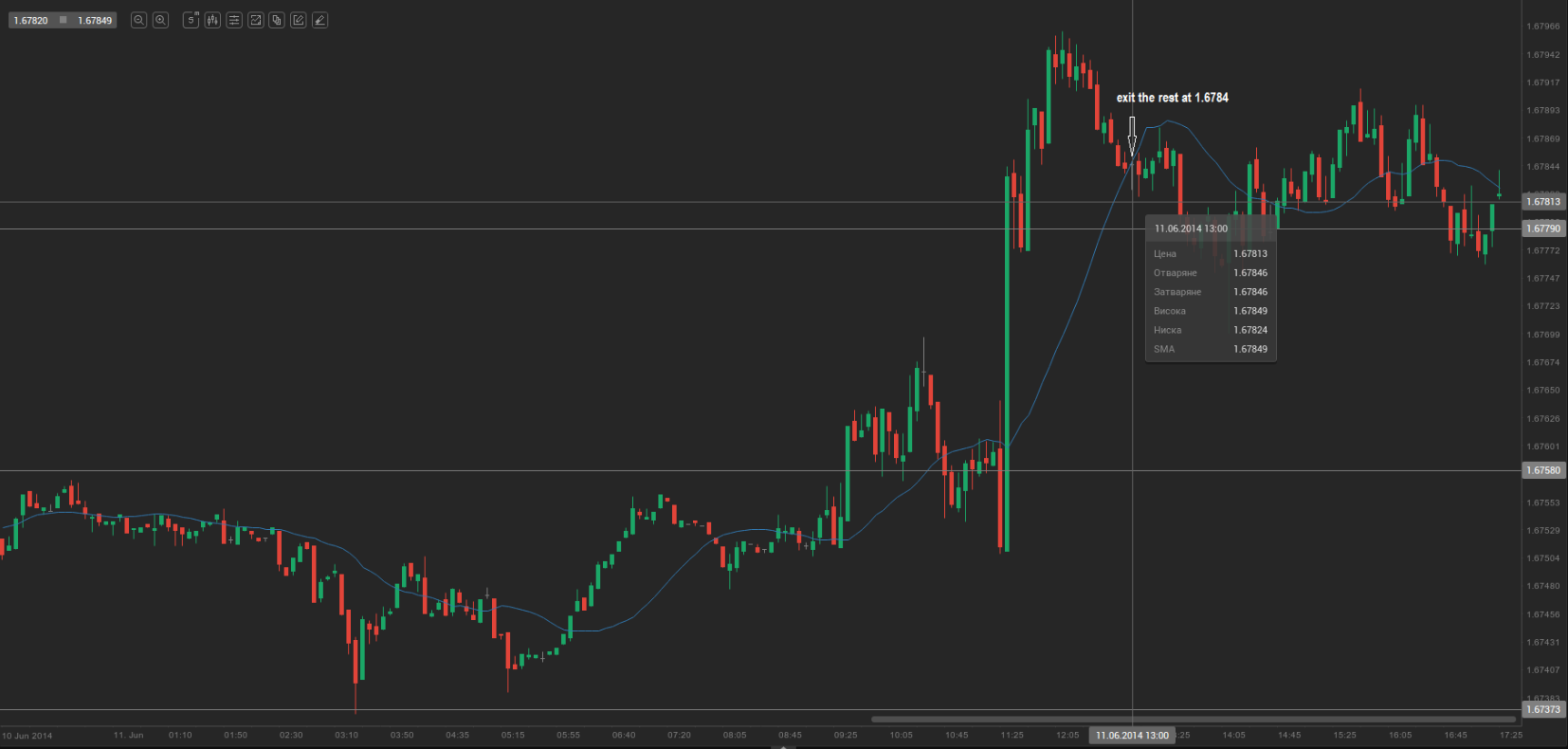Trading the news – proactive approach
This lesson will cover the following
- A quick overview
- Steps a trader needs to follow for this strategy
Trading news releases is based on the concept that, if the actual figure in a specific report differs considerably from the consensus figure (the median forecast), market participants react accordingly; this reaction is then followed by further price action. There are a number of ways to trade the news – first, enter the market before the data are released (proactive approach); second, enter after the news has already been reported by the mass media (reactive approach); and third, combine the first two approaches.
The proactive approach is associated with a good risk-to-reward ratio because it involves entering about 20 minutes before the report. There is no need to enter, say, five minutes before the news is released, because currency-pair spreads are usually wider and some forex brokers may make order execution more difficult. As soon as the actual figure is announced, the sudden move that follows provides the trader with an opportunity to lock in gains on part or all of the position. If the trader’s interpretation of the macroeconomic data is incorrect, his/her protective stop will be triggered almost immediately.
- Trade Forex
- Trade Crypto
- Trade Stocks
- Regulation: NFA
- Leverage: Day Margin
- Min Deposit: $100
What does a trader need to do?
Proactive trading follows several steps.
When going long:
the trader needs to enter the market about 20 minutes before the release of a key economic report. This way he/she is positioned while currency-pair spreads are still narrow and can focus on the risks associated with this single report;
the trader needs to place a protective stop at least 10 pips below the low of the range or at least 30 pips below his/her entry, whichever is nearer. By ‘range’ we mean the price action that has developed during the past two hours. If the range is very tight, the trader should consider a more prominent swing high or swing low;
the trader needs to take profit on 50% of his/her position when the price moves in his/her favour by the amount put at risk;
the trader then moves the stop on the remaining portion of the position to the 20-day SMA, or sets a profit target at a distance three times the amount risked.
When going short:
the trader needs to enter the market about 20 minutes before the release of a key economic report;
the trader needs to place a protective stop at least 10 pips above the high of the range or at least 30 pips above his/her entry, whichever is nearer. By ‘range’ we mean the price action that has developed during the past two hours. If the range is very tight, the trader should consider a more prominent swing high or swing low;
the trader needs to take profit on 50% of his/her position when the price moves in his/her favour by the amount put at risk;
the trader then moves the stop on the remaining portion of the position to the 20-day SMA, or sets a profit target at a distance three times the amount risked.
The proactive approach has one major issue – forecasting economic data. Unless one has a degree in economics or solid experience in fundamental analysis, it can be difficult to determine whether a specific data set will show improvement or deterioration on a monthly or yearly basis, let alone how it will compare with forecasts.
Example
Let us look at some actual macroeconomic data. At 11:30 GMT+3 on 11 June 2014 the Office for National Statistics (ONS) in the United Kingdom was expected to release data on the claimant-count change for April. We expected positive data because the number of people who had filed for unemployment assistance in the UK had been falling for 18 consecutive months. The median expert forecast suggested that the number of claims would drop by 25,000, following a fall of 28,400 in the previous month. So we intended to go long the pound and short the US dollar, or buy GBP/USD, 20 minutes before the official report was published (at 11:10 GMT+3). At that time the entry price was 1.6758. The low of the range during the past few hours was 1.6747, so our protective stop was placed at 1.6737 (at least 10 pips below the range low). This meant we risked 21 pips. As soon as we made our long entry, we set the profit target for 50% of the position at 1.6779 (1.6758 plus 21 pips).
The official report was released at 11:30 GMT+3 and it outstripped expectations. The number of jobless claims fell by 27,400 in May, marking the 19th consecutive monthly decrease. This figure boosted demand for the pound. Our profit target was reached immediately, as GBP/USD surged from 1.6751 to 1.6784 (33 pips) in just a few minutes. With 50% of our position closed, we moved the protective stop to breakeven on the remaining portion. The price continued moving in our favour, so we trailed the stop using the 20-day SMA. The remaining portion of the position was exited at 1.6784, while the total profit was 47 pips, or an average profit of 23.5 pips.


